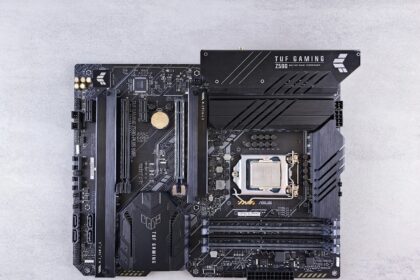This introduction explains what you will achieve and how the guide will help restore stability on your computer. The Kernel‑Power critical error often shows up as Event ID 41 and causes sudden shutdowns or restarts.
We’ll pinpoint likely causes: sudden loss of power, incomplete shutdowns, faulty RAM or graphics card, outdated system builds, and Windows Fast Startup. You’ll learn how to spot the issue in Event Viewer using the common keywords linked to this crash.
What to expect: a short set of actions that mix safe software changes and simple hardware checks. You will update the system, disable Fast Startup, run CHKDSK/DISM/SFC, reseat RAM and the GPU, and inspect power cables and the supply.
Before you begin, follow basic safety: shut down fully, disconnect AC power, and ground yourself when touching internal hardware. These steps help you work confidently and avoid data loss while troubleshooting.
What a Kernel-Power Critical Error Means and Why Your PC Crashes
When Event Viewer logs Event ID 41, it flags an abrupt restart recorded without a clean shutdown. That entry shows the system experienced an unexpected stop, often caused by a sudden loss of power or a hang that forced a hard reset.
Event details such as keywords (70368744177664),(2) help confirm this is a kernel‑power critical error and not another crash type. Reviewing the event code and timestamp narrows the scope for troubleshooting.
This problem isn’t only software. Loose 24‑pin or 8‑pin PSU cables, an aging supply, bad RAM, or a failing graphics device can trigger the same pattern of abrupt reboots.
Fast Startup is another common trigger. That hybrid boot mode can leave the system in a hibernation‑like state and cause conflicts when the computer restarts or resumes.
- Check Event ID 41 entries for keyword matches and timestamps.
- Confirm Fast Startup and power settings if crashes recur after sleep or shutdown.
- Inspect PSU connections and test memory or GPU if hardware signs appear.
| Likely Cause | Common Symptom | Quick Check | Probable Action |
|---|---|---|---|
| Loose PSU cables | Immediate shutdown or restart | Visual cable and connector check | Reseat connectors, test with known PSU |
| Fast Startup enabled | Crashes after shutdown or wake | Verify power settings | Disable hybrid startup in settings |
| Faulty RAM or GPU | Random reboots under load | Run memory and GPU tests | Reseat modules, replace if failing |
| Outdated drivers or firmware | Crashes on resume or heavy use | Check driver versions and updates | Update chipset and graphics drivers |
How to Fix a Windows Kernel Power Error in 5 Easy Steps
Start by applying updates and restarting; many crashes vanish after the latest patches install. That clears known bugs and gives you a clean baseline before deeper checks.
Update system and reboot
Press Win+I, type update in the search box, then choose “Check for updates.” Download and install any available version updates, then restart the computer. This applies important fixes for power management and drivers.
Disable Fast Startup
Open Power Options, pick “Choose what the power buttons do,” then click “Change settings that are currently unavailable.” Uncheck Turn on fast start‑up, save changes, and restart. Full shutdowns prevent hybrid resume conflicts.
Repair storage and system files from an elevated command prompt
Open Command Prompt as administrator (right‑click and run). Run:
- chkdsk /r — scans and fixes disk errors.
- DISM /online /cleanup-image /restorehealth — repairs the component store.
- sfc /scannow — restores protected system files.
Wait for each command to finish, then reboot so changes take effect.
Reseat RAM and graphics card; check power connectors
Power down and unplug. Ground yourself, remove and reseat the ram sticks and the GPU. Verify the motherboard 24‑pin and CPU 8‑pin EPS and any PCIe leads are fully latched. Look for scorched connectors or swollen capacitors.
Stress-test supply and hardware with OCCT
Open OCCT, select the Power test and Instruction Set = Auto. Close other software and run for at least one hour. Review logs for voltage drops, thermal faults, or shutdowns. If instability appears, swap in a known-good power supply to confirm the fault before replacing parts.
| Command | Purpose | Next action |
|---|---|---|
| chkdsk /r | Disk surface and file repair | Reboot and recheck logs |
| DISM /restorehealth | Fix component store | Run sfc /scannow next |
| sfc /scannow | Restore system files | Restart and monitor |
Additional fixes to improve stability on Windows 10 and Windows 11
Many unexpected shutdowns link back to outdated drivers or aggressive power settings. Begin with driver checks, then move on to power profiles and any overclocking changes. Keep tests small and reversible so you can track what changed.
Update or roll back device drivers
Prioritize audio, GPU, and chipset drivers. Visit manufacturer support pages and match the exact windows version when you download. Install WHQL releases and restart the system. If crashes began after a recent driver update, roll back to the previous version and monitor behavior for several sessions.
Tune Power & sleep and Advanced power settings
Open Power & sleep settings and set Sleep and Hibernate to values that suit testing. In Advanced settings, set Hard disk > Turn off hard disk after to Never and Sleep > Sleep after to Never while you diagnose.
Remove overclocks while diagnosing
Return CPU and GPU to stock clocks and restore default voltages. Overclocks can hide the root cause or create false positives. If stability returns under stock profiles, reintroduce changes one at a time.
| Action | Why it helps | Next step |
|---|---|---|
| Update drivers from vendor site | Fixes bugs that trigger crashes | Restart and test for recurrence |
| Roll back recent driver | Restores known stable behavior | Monitor for several uses |
| Adjust advanced power settings | Prevents spurious wake and spin-down faults | Test with Never values, then reapply energy-saving |
| Disable overclocks | Removes variables during diagnosis | Run stress test under stock settings |
Verify Event ID 41 details and know when to escalate the issue
Start by checking System logs for repeated critical entries and timestamps. Open Event Viewer from the Start menu, go to Windows Logs > System, and filter the log by Critical level. Look for Event ID 41 entries and confirm the keywords (70368744177664),(2) so you target the right crash type.
Use the details pane to note bugcheck codes, power transition notes, and any device names or driver references. Record each event time and build a simple timeline of occurrences after changes such as driver updates or disabling Fast Startup.
If crashes match stress tests or heavy loads, prioritize the power supply and hardware checks. If failures happen on wake or resume, focus on drivers and sleep settings instead. When logs persist after following the recommended steps, gather OCCT logs, Reliability Monitor reports, and memory or dump files.
- Run sfc and DISM again from an elevated Command Prompt before replacing parts.
- Test with a known-good power supply; if the same critical entry returns, escalate to vendor support or a repair service.
| Symptom | Quick check | Next action |
|---|---|---|
| Repeated Event ID 41 | Filter System log by Critical | Build timeline and gather logs |
| Crashes under load | Run OCCT power test | Swap in known-good supply |
| Crashes on resume | Check driver versions | Rollback or update drivers |
Conclusion
A simple, ordered approach often reveals whether the fault is software, drivers, or hardware. Follow the recommended steps and record each action so you can track results over time.
Start with updates, disable Fast Startup, then run chkdsk, DISM and sfc from an elevated command prompt. Reseat RAM and the GPU, verify PSU and motherboard power connectors, and run OCCT to stress-test supply stability.
If the windows system still shows repeated critical entries or the kernel power event returns, focus on driver work and test with a known-good power unit. Keep logs, note driver versions, and gather OCCT and dump files before seeking professional support. With this checklist you can confidently fix problem causes and reduce recurring shutdowns on your computer.
FAQ
What does a kernel-power critical error mean when my PC suddenly shuts down?
A kernel-power critical event signals the system lost power unexpectedly or crashed. Event ID 41 usually appears in Event Viewer when Windows can’t shut down cleanly. Common causes include faulty power supplies, loose PSU or motherboard cables, defective RAM, unstable drivers (GPU, chipset, or sound), corrupted system files, or aggressive overclocks.
Can Windows Update really resolve kernel-power issues?
Yes. Installing the latest Windows updates often fixes driver incompatibilities and known OS bugs that trigger crashes. Always download and install updates, then reboot. If the issue started after an update, consider rolling back the specific driver or update via Device Manager or Settings.
Which built-in tools repair system files linked to this error?
Use an elevated Command Prompt and run DISM and SFC: DISM /Online /Cleanup-Image /RestoreHealth followed by sfc /scannow. Also run CHKDSK /f on your system drive to fix disk errors. These tools repair corrupted files that may cause instability.
How do I check Event Viewer for Event ID 41 details?
Open Event Viewer, go to Windows Logs > System, and filter by Event ID 41. Look for Kernel-Power entries and note keywords like (70368744177664) or (2). Track timestamps and recurrence to correlate crashes with apps, drivers, or hardware changes.
Could faulty hardware cause this problem even if drivers are up to date?
Absolutely. A failing power supply, loose PSU connectors, bad RAM sticks, or a misseated GPU can cause sudden shutdowns. Reseat RAM and the graphics card, check all power and motherboard cables, and swap components when possible to isolate the fault.
Is disabling Fast Startup a safe step for troubleshooting?
Yes. Turn off Fast Startup in Power Options to prevent hybrid shutdown problems that sometimes lead to kernel-power events. This change affects only how Windows shuts down and restarts and can improve stability during diagnosis.
When should I stress-test components and which tool is recommended?
Stress-test after ruling out software causes. Use OCCT to test power delivery, CPU, and GPU under load; monitor voltages and temperatures. If the system fails under stress while idle tests pass, suspect the PSU or cooling as the culprit.
How do driver rollbacks help with this error?
If a recent driver update coincides with crashes, roll back the device driver in Device Manager (GPU, chipset, or audio). Newer drivers can introduce instability; reverting to a previous stable version often stops kernel-power events.
Should I disable overclocking while troubleshooting?
Yes. Remove CPU and GPU overclocks and revert BIOS/UEFI voltage tweaks. Overclocking increases instability and can mask underlying hardware or power issues. Test with stock settings before making changes.
When is it time to call professional support or replace parts?
Escalate if Event ID 41 repeats after software fixes, system tests show failing components, or stress tests trigger shutdowns pointing to a PSU or motherboard issue. If you’re uncomfortable opening the case, seek a certified technician or contact component manufacturers for RMA support.
























